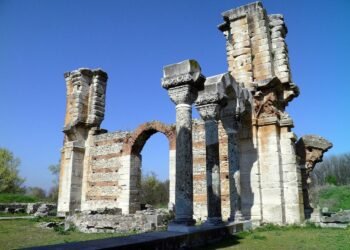A team of researchers has made an incredible discovery beneath a bustling train station in the center of Paris.

They have uncovered 50 graves in an ancient necropolis, which provides an exceptional opportunity to observe the life and customs of the inhabitants of the French capital almost 2,000 years ago.
These burials belong to a lost necropolis that dates back to the Gallo-Roman town of Lutetia, which is the predecessor of the modern-day city of Paris.
The discovery is especially remarkable since the buried necropolis remained undiscovered despite multiple road works over the years, as well as the construction of the Port-Royal station on the historic Left Bank back in the 1970s.
The graves are believed to have belonged to members of the Parisii tribe, which is where the modern city derives its name. However, during the time of these burials, the city was known as Roman-occupied Lutetia.
As such, these newly discovered graves are of immense historical and archaeological significance, providing a unique glimpse into the customs, beliefs, and everyday life of the people who inhabited this ancient town.
Lutetia, being a relatively significant city, enjoyed various benefits of Roman technology such as aqueducts, baths, an amphitheater capable of holding about 15,000 people, and fortifications that guarded the city against barbarian invasions from the East, which were a recurring threat to the Empire.
The National Institute of Preventive Archaeological Research (INRAP) initiated an archaeological excavation when plans were made to construct a new exit for the train station.
This excavation covered an area of approximately 200 square meters of land, revealing a collection of burials that were believed to be part of the Saint Jacques necropolis dating back to the 2nd century, according to a news release by the research institute.

During a press conference, Camille Colonna, who is an anthropologist at the National Institute of Preventive Archaeological Research in France, stated that there were strong indications that the site was situated near the southern necropolis of Lutetia.
Lutetia’s “Saint Jacques” necropolis is the biggest burial site in the Gallo-Roman city, which was previously excavated in the 1800s.
However, only valuable objects were removed from the graves, while numerous skeletons, burial offerings, and other artifacts were left behind.
The INRAP team found a previously unexplored section of the site that had not been seen since ancient times, according to Dominique Garcia, the president of INRAP.
In March, the excavation commenced. Despite dating from a time when burials and cremations were both common, all 50 of the graves consisted of burials only.
The bodies were discovered in coffins with shoes placed “either at the feet of the dead or next to them, like an offering,” noted Camille Colonna, according to France24.
She mentioned that the team was pleased to find a skeleton with a coin in its mouth as it allowed them to date the burial to the 2nd century CE.
This discovery may contribute to a deeper appreciation of the rich and diverse cultural heritage of Paris and its people.


























